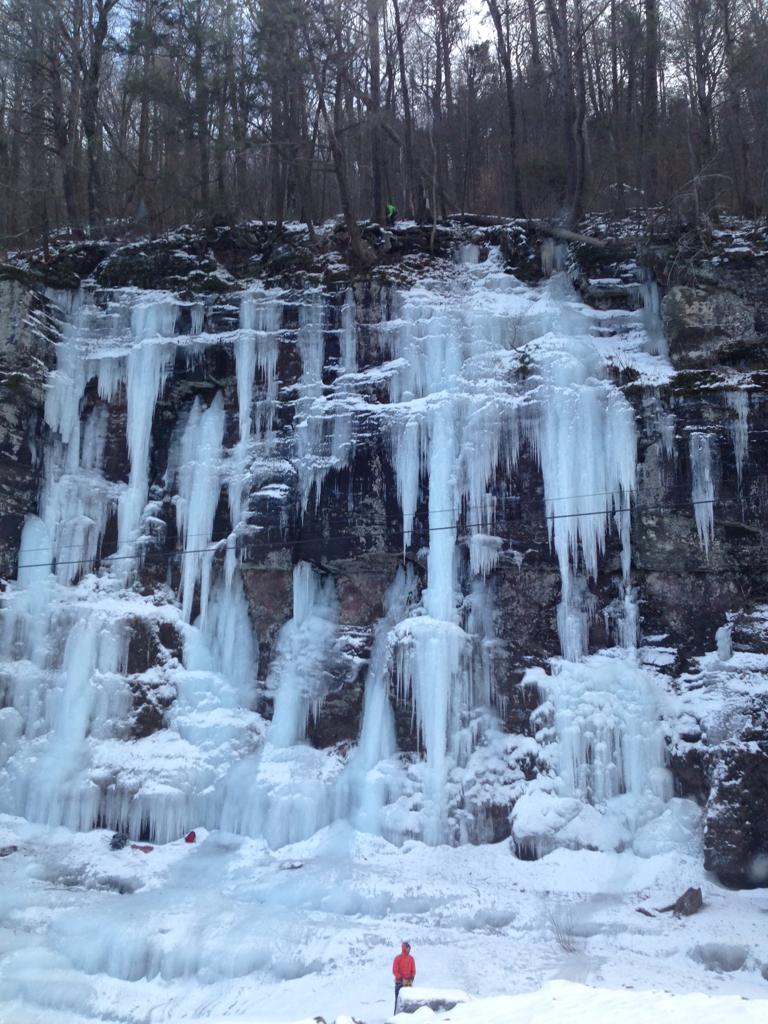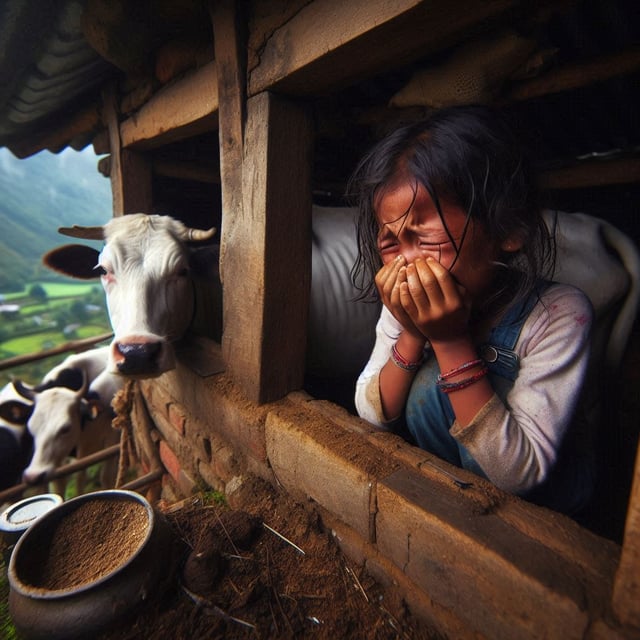Exploring the Ice Climbing Culture in Nepal

Introduction
The thrilling history of ice climbing has a fascinating evolution. Ice climbing, evolved from the support of adventurous explorers, who navigated the icy terrains and developed the use of tools; such as the modern ice axe.
The axe, revolutionized the art of ice climbing and developed it as an extreme sport.
Ice climbing is a winter sport that demands physical strength, quick thinking, intelligence, determination, skill, and technique to conquer the slippery terrain.
It has evolved into an important sport for Nepal, serving as an unparalleled playground of frozen adventures at high altitudes. Nepal aspires to become an all-season tourist destination to boost the economy, and ignite the adventurous spirit that thrives in the hearts of all adventurers globally.
The History of Ice Climbing
Ice climbing as a distinct sport traces its roots back to 1908 when Oscar Eckenstein made a significant innovation by developing claw-tooth crampons that were attachable to the bottom of climbing boots. These claw-tooth crampons were a game-changing invention in the field of ice climbing as they radically enhanced the grip and stability on slippery ice.
In 1928, Laurent Grivel introduced an innovative design with two front points on crampons, significantly increasing the surface area of the boot in contact with the ice. This improvement enhanced traction and grip, allowing climbers to ascend even steeper and more complex ice formations, pushing the boundaries that were previously deemed as impossible activities.
Another notable inventor, Mariner Wastl, is credited with inventing the ice screw in 1958. This invention allowed climbers to easily drill into ice, providing an efficient and reliable method to anchor themselves while ascending vertical ice walls and frozen waterfalls, saving climbers valuable time and energy.
Spiraling further innovation, in 1966, the founder of Patagonia, Yvon Chouinard, innovated the modern-day ice axe with improved weight distribution, providing climbers with better control and stability when navigating challenging icy terrains.
These innovations greatly reduced the risk of slipping and falling, allowing climbers to ascend icy peaks confidently and safely. The evolution of versatile tools and equipment played a pivotal role in flourishing communities and competitions centered around ice climbing, ultimately transforming it into a popular and widely practiced sport.
Ice Climbing Opportunities in Nepal
Nepal boasts a magnificent reputation, thanks to its majestic Himalaya range and natural resources. Among the 14 peaks that rise 8,000 meters above sea level, they are considered the death zones, and eight of them are found on the Nepal side. These towering giants serve as a powerful magnet for adventure sports enthusiasts from around the world.
Unfortunately, the Himalayan belt retains its chilly cold even during the summer months and endures extremely harsh winters. Consequently, even the local population prefers to migrate southward in the winter, creating a challenge in retaining tourists during cold seasons.
The development of snow sports offers a promising solution to boost tourism in Nepal and transform the Himalayan Republic into an all-weather tourist destination. The creation of year-round tourist activities has the potential to make the profession more lucrative for entrepreneurs, workers, and the government alike. Therefore, it is evident that the government should prioritize skiing, snowboarding, and ice climbing activities bringing a large volume of adventure enthusiasts.
Nepal can become one of the finest ice-climbing destinations globally, offering exhilarating experiences for adventurous climbers. The country boasts gems like Kwangde Waterfall Ice- one of the world's longest waterfall ice routes. Additionally, Nepal’s abundant wealth of unclimbed ice climbing destinations means that climbing enthusiasts can etch their names as the first person to conquer these challenging routes and embark on an arduous but rewarding journey.
Institutionalization of Ice Climbing Sport in Nepal
After Nepal opened its borders to international adventurers, in 1950 under the leadership of Maurice Herzog, the team summited the magnificent Annapurna I (8091 meters) in the ‘dead zone,’ igniting the waves of mountaineers who were keen on exploring the country’s towering peaks. In 1973, the Nepal Mountaineering Association (NMA) was founded with the mission to promote mountaineering, climbing, and tourism. NMA provided training, support, and guidance to aspiring climbers while also regulating and coordinating mountaineering and climbing activities, that ensured safety standards through rules and regulations.
NMA plays a crucial role in the conservation of the fragile Himalayan environment and in preserving its rich cultural heritage. Therefore, it has been instrumental in ensuring that mountaineering in Nepal is conducted responsibly and sustainably, benefiting all stakeholders.
Additionally, NMA established an affiliation with the International Climbing and Mountaineering Federation (UIAA) in 1975. This collaboration has facilitated cooperation and collaboration between Nepal and the international mountaineering community, leading to the exchange of knowledge, expertise, and safety standards.
Nepal has taken significant steps to promote ice climbing by organizing festivals and tournaments that attract international and domestic participants. On February 2, 2019, Nepal hosted its First Ice Climbing Festival in Humde, Manang, showcasing Nepal as a perfect ice-climbing destination. The inaugural event featured 20 climbers from various countries, including the United States, China, India, and Nepal.
From February 1 to 10, 2020, Nepal organized the 2nd Annual Ice Climbing Festival, which witnessed substantial growth in the number of participating ice climbers, with over 40 adventurers taking part. Unfortunately, information regarding the 3rd International Ice Climbing Festival organized by the Nepal Mountaineering Association is scarce.
It is evident Nepal seems to be determined to promote ice climbing, a move that has the potential to radically boost the country’s tourism sector.
Conclusion
Ice climbing has evolved into a promising sport due to groundbreaking innovations like the claw-tooth crampons and the modern ice axe that slowly made ice climbing easier.
Ice climbing is gaining popularity in Nepal, primarily because of the renowned Himalayan landscape, cold frozen terrain made up of challenging mountainous land, which historically acted as an unforgiving hindrance to development. This geography is slowly converting into a boon for the growth of tourism. Nepal can become a global ice-climbing hotspot, an ideal adventure destination through initiatives like ice-climbing festivals.
Nepal's effort to develop sustainable strategies fosters a vibrant ice-climbing culture with the aspiration of becoming an all-weather destination. The Himalayan state, to become a top tourist destination, has been working to take benefit from challenging landscapes, unexplored routes, and breathtaking ice formations while discovering new landmarks.
Nepal’s breathtaking terrain attracts ice-climbing adventure and helps position the country as an incredible filming destination. The Government of Nepal should actively promote reality shows, documentaries, and even locations for feature films, which will transform Nepal into a truly all-season tourist destination.
Stay updated by following us on Instagram and Facebook.
Author
Kripendra Amatya, Researcher, Nepa~laya Productions
Editor
Dana Moyal Kolevzon, Director of International Relations, Nepa~laya Productions
Published Date
January 1, 1970



